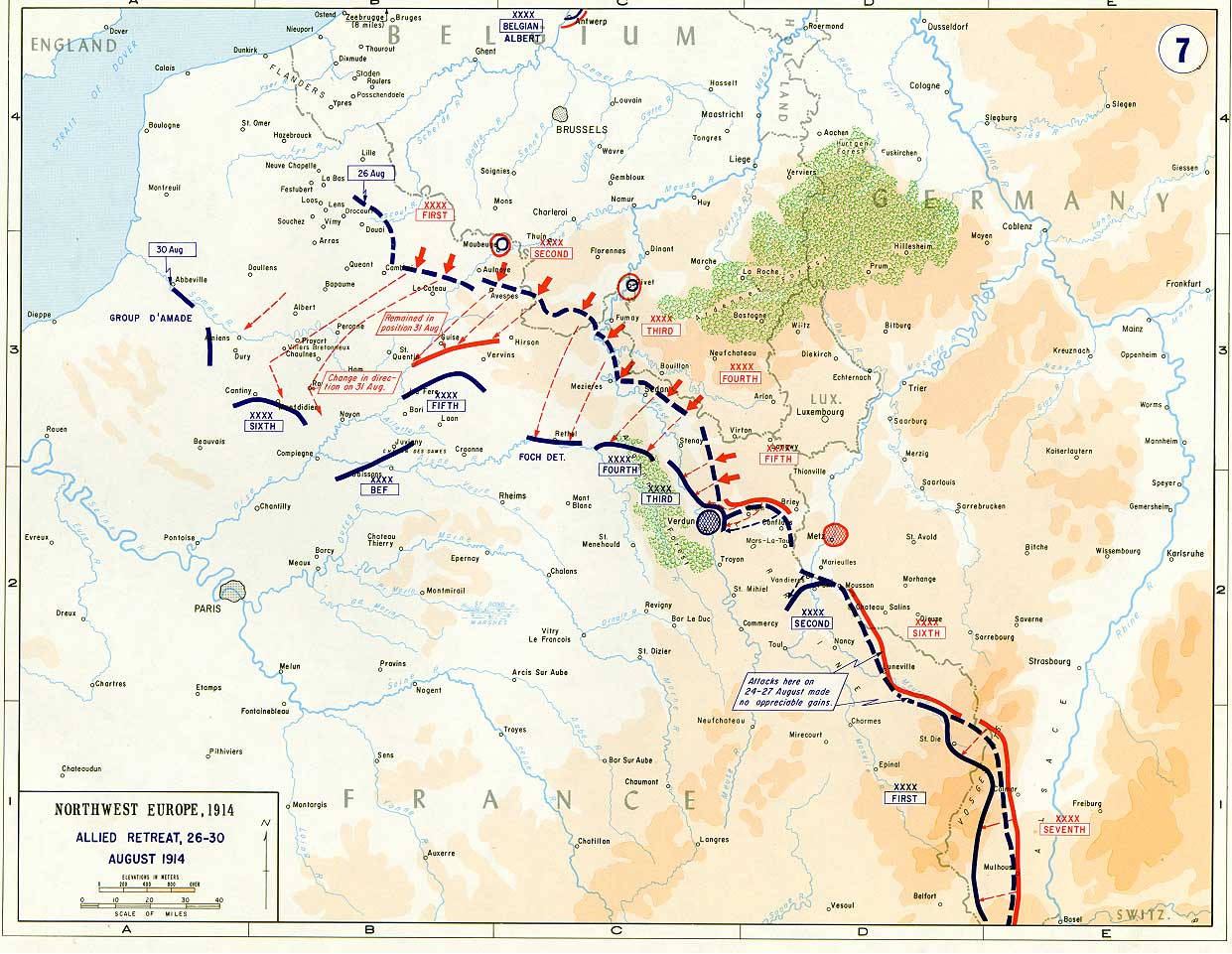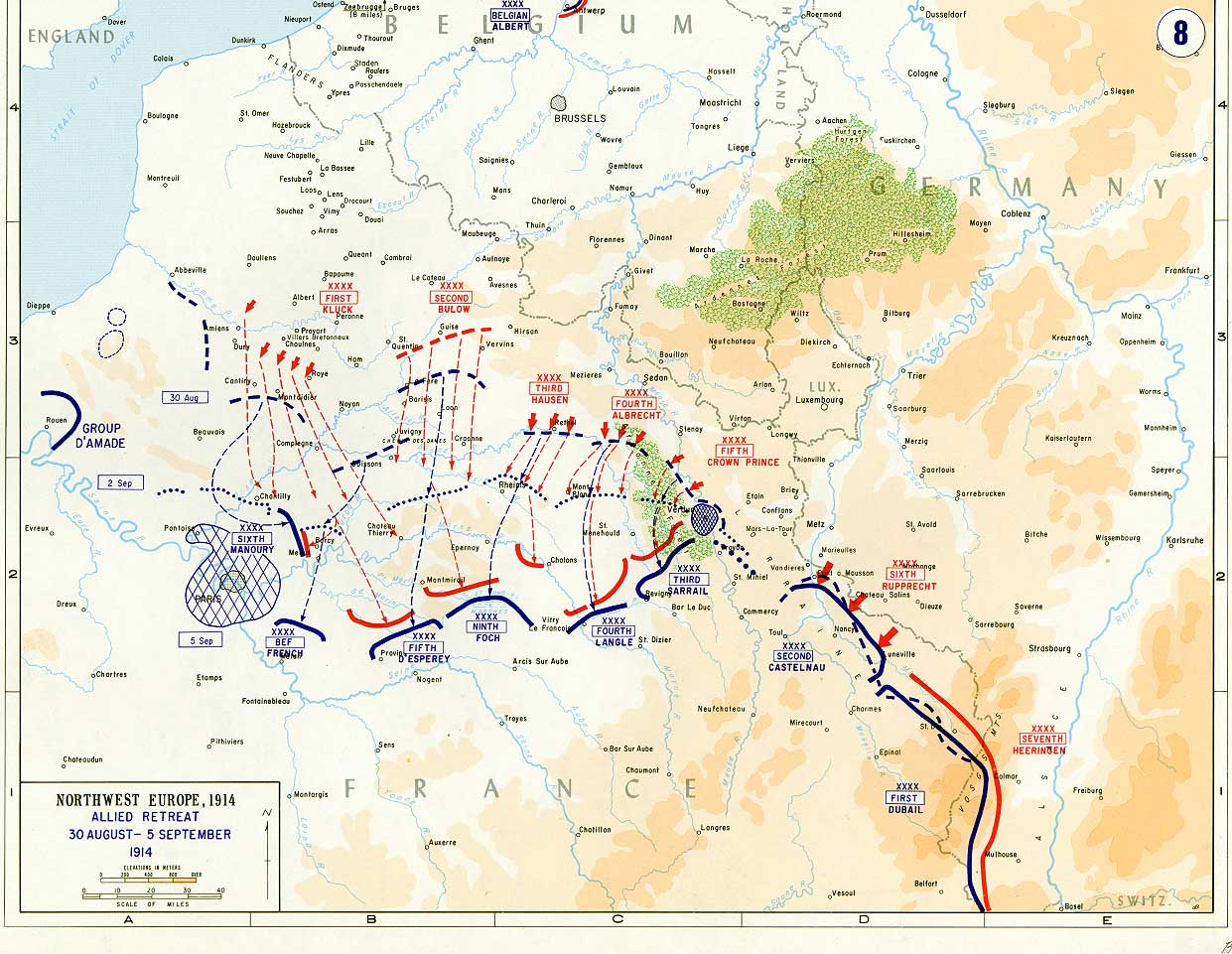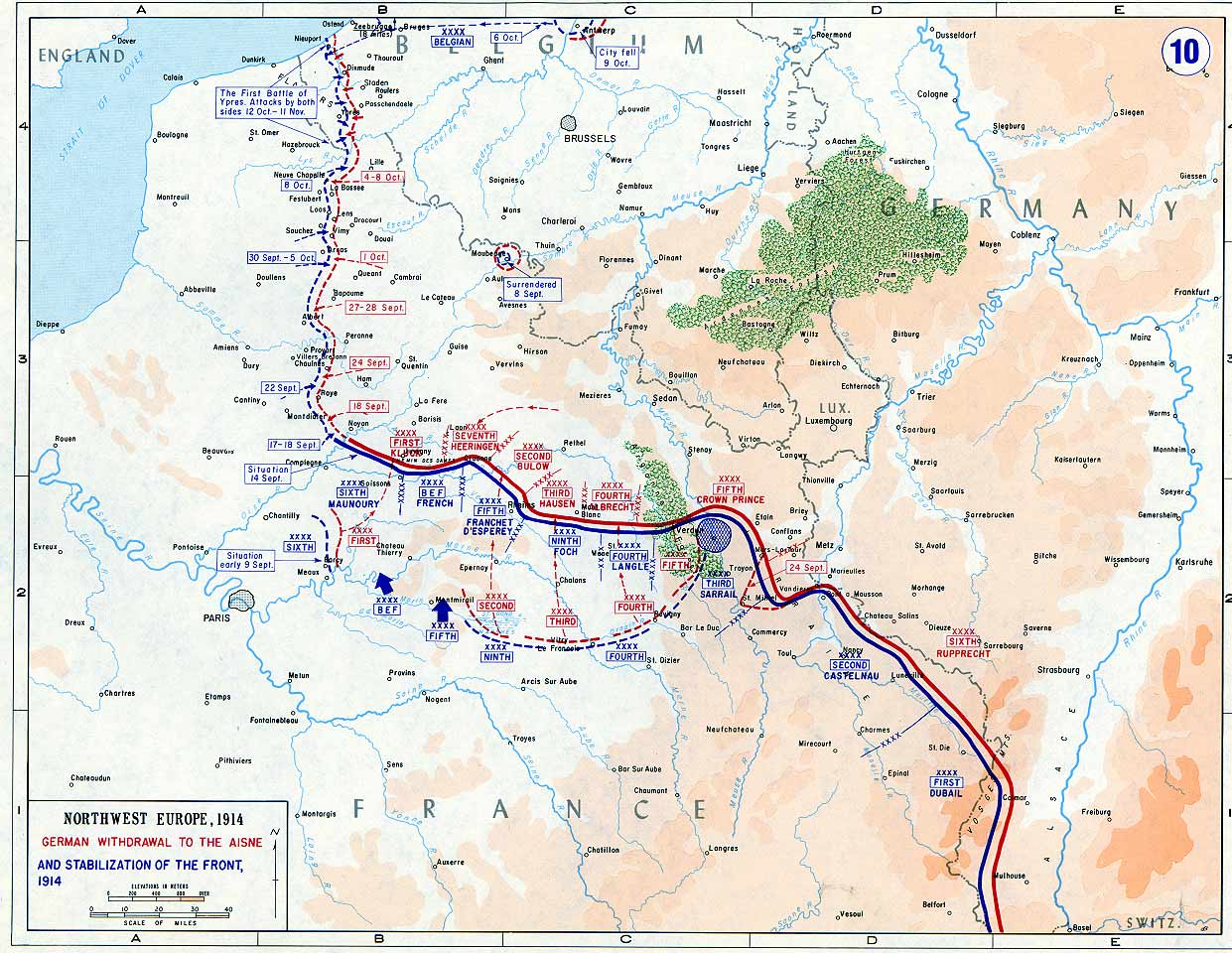Nevertheless the Advance continued according to plan, v. Kluck being even two days ahead of his timetable. Around the 29. and 30th it became finally obvious that the right wing had been to much stripped of troops: gaps opened between the First and the Second, later between Second and Third Army. So v. Kluck had to conduct an inward wheeling manoeuvre, which brought him closer to v. Buelows Second Army. This much discussed manoeuvre was the second departure from the Plan, not as much a failure of v. Kluck but a military correct decision forced by the lack of troops.
The plan to bypass Paris in the east had to be abolished, thus the most crucial part of the Schlieffen plan was permanently lost: the idea of encirclement. Moltke now hoped for a breakthrough rather than an encirclement, despite the fact that the battles of the frontiers had already shown the costs of this kind of attack. (9)
The growing distances from OHL to the Army headquarters made this situation even worse: it was not until the 4th of September that Moltke realised the danger from the assembling French Sixth Army in Paris. The orders given on that evening were issued to late and without the exact knowledge of the position of the troops the were given to. The frontal attacks of the Forth and Fifth Army to capture Verdun and Nancy from the equally strong and in fortified defences sitting French failed.
At the same time ( 5th to 8th Sept.) the German right wing was attacked by the British Expeditionary Force (BEF), the French Fifth and Sixth Army. Exhausted from the march and weakened by the detachments it was beaten by the excellent guided French and English troops. The gap between the First and the Second army was still 30 miles wide on the 5th, and the BEF attacked into it and threatened both armies flanks. All the OHL could do was to accept the fact that v. Buelow and v. Kluck ordered retreats behind the Aisne on the 8th and 9th of September.
Footnotes:
9. Neame, op.cit., p. 26pp.


